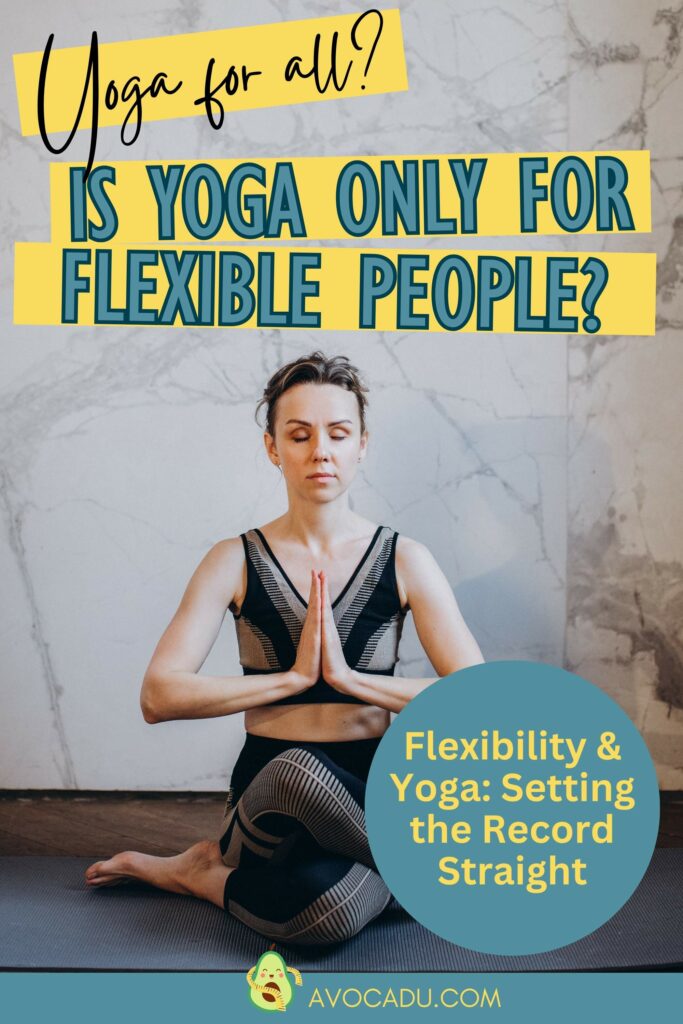Breaking Down Yoga Myths: Is Yoga Only for Flexible People?
Ever noticed that yoga studios are sprouting everywhere and our social media feeds are awash with advanced yogic poses?
These developments often fuel a prevalent myth – yoga is exclusively for flexible folks. But is this true? Is Yoga ONLY for flexible people?
We’re here to bust this myth wide open and show you that yoga, in reality, is for everyone, irrespective of their flexibility levels.

This post may contain affiliate links, which helps keep this content free. Please read our disclosure for more info.
Understanding Flexibility
Flexibility, often hailed as the magic word in the world of yoga, deserves a little deep dive. So, what exactly is it?
In the simplest terms, flexibility refers to the extent of movement in our joints or series of joints. Think of it as the ability of your muscles and ligaments to stretch, allowing your body to move freely.
Now, let’s talk about the factors that influence flexibility:
Genetics: Just like your eye color or height, flexibility can be a family affair. Some people are born with naturally looser ligaments, which may make them more flexible without even trying.
Age: As the saying goes, we’re not getting any younger! As we age, our muscles naturally lose elasticity which can result in reduced flexibility. However, with regular activity like yoga, this process can be slowed down.

Gender: Typically, women are often more flexible than men. This is due to hormonal differences and the fact that women generally have less muscle mass surrounding their joints which can allow for a greater range of motion.
Daily Routine and Lifestyle: If your day involves sitting at a desk or being inactive for long periods, your flexibility might take a hit. On the flip side, regular physical activity, especially movements that stretch your muscles, can improve flexibility.
Temperature and Warm-up: Your flexibility can even vary throughout the day! You might notice more flexibility in a warm room or after your body is warmed up through some form of exercise. That’s why many yoga classes start with gentle movements – to get your body ready for deeper stretches.
Previous Injuries: Past injuries, especially those to muscles, joints, or ligaments, can affect flexibility. Scar tissue is often less flexible than regular muscle tissue.
Mindset and Stress Levels: Believe it or not, your mental state plays a role in flexibility too! When you’re stressed, your body tenses up, limiting your range of motion. Practicing relaxation and deep breathing can actually increase your flexibility.
Related Article: Yoga for Stress Relief: Top 10 Poses You Can Try at Home
Now, here’s the big takeaway – flexibility is NOT a prerequisite for yoga. That’s right, you don’t need to be able to touch your toes to take a yoga class.

Yoga is an incredibly inclusive practice, welcoming people of all flexibility levels. Whether you’re as bendy as a rubber band or stiff as a board, yoga has something to offer.
Rather than focusing solely on achieving picture-perfect poses, yoga encourages personal growth and well-being.
The stretches and poses in yoga can actually help improve your flexibility over time, but they also work to strengthen your muscles, calm your mind, and improve your overall health.
The Origin of the Yoga-Flexibility Myth
To understand how the myth of yoga being solely for the super flexible came to be, we need to delve a bit into the past and also consider our modern cultural landscape. The origin of the yoga-flexibility myth is a blend of ancient history, popular culture, and societal perceptions.
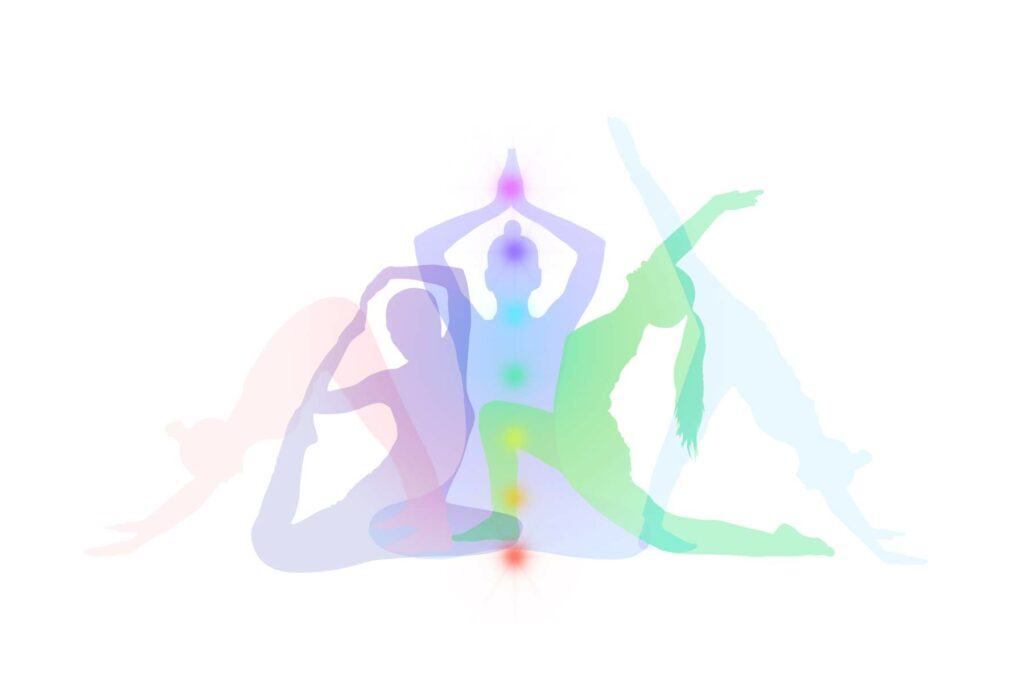
In its origins in ancient India, yoga was not just about the physical poses, known as asanas. It was a comprehensive system of spiritual development, involving moral codes, meditation, breath control, and more.
Over time, as yoga traveled and evolved, the physical aspect, especially asanas, started to gain more prominence.
Related Article: Exploring Different Styles of Yoga: Which One Suits You Best?
Fast-forward to our contemporary times, and you’ll notice a distinct shift. Modern yoga, particularly in the West, has been significantly influenced by a culture that places a high value on physical fitness and aesthetic appeal.
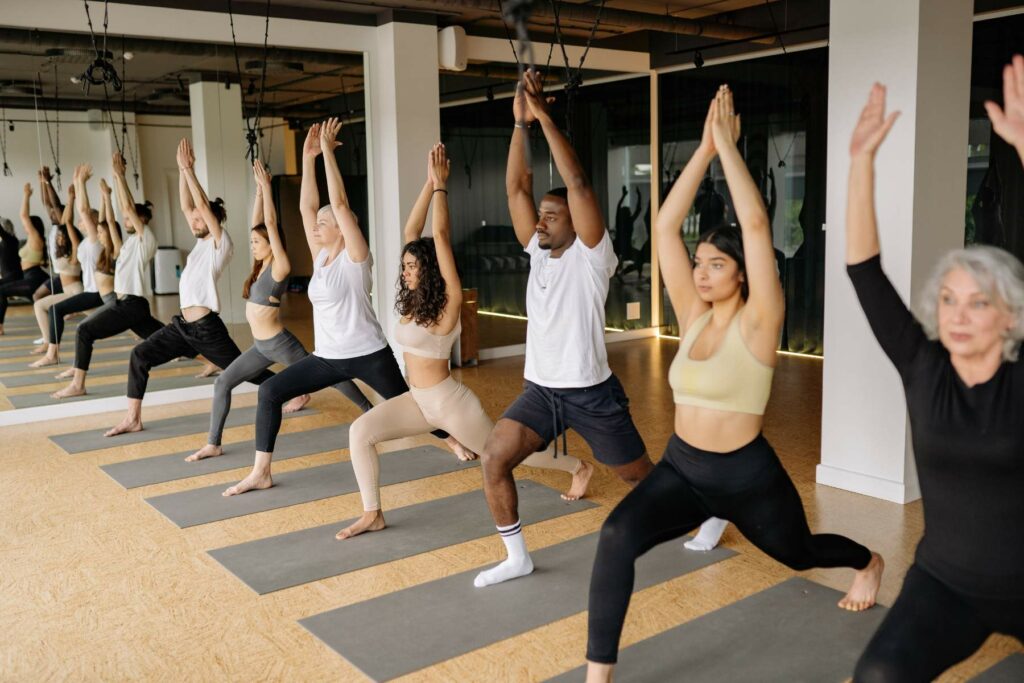
This cultural lens has often spotlighted yoga as a practice that requires and results in impressive flexibility and strength, and that’s largely due to the images and narratives we see in the media.
Social media platforms are awash with images of advanced yogis, perfectly executing complex poses that require a high degree of flexibility. Magazines and advertisements often showcase yoga as an exercise for the lithe and limber, featuring models in perfect poses against idyllic backdrops.
TV shows and movies often stereotype yogis as ultra-flexible people, able to wrap their legs around their necks or bend in seemingly impossible ways.
These media portrayals, combined with a general lack of understanding about yoga’s true holistic nature, have led many to believe that extreme flexibility is a must to practice yoga. The thinking goes, “If I can’t twist into a pretzel, how can I do yoga?”
But let’s debunk this right now: Yoga is NOT just for the ultra-flexible.
True, practicing yoga can improve flexibility over time. But more importantly, yoga is about balance, strength, and inner peace. It’s about understanding your body, respecting its limits, and gradually expanding those limits.
It’s about the connection between mind and body, achieved through the breath. And above all, it’s about recognizing that every body is a yoga body, regardless of how flexible or inflexible it may be.
In the end, the mat welcomes all: the flexible, the not-so-flexible, and everyone in between. The beauty of yoga lies in its adaptability and inclusiveness, making it a practice that truly is for everyone.
Yoga is for Everyone
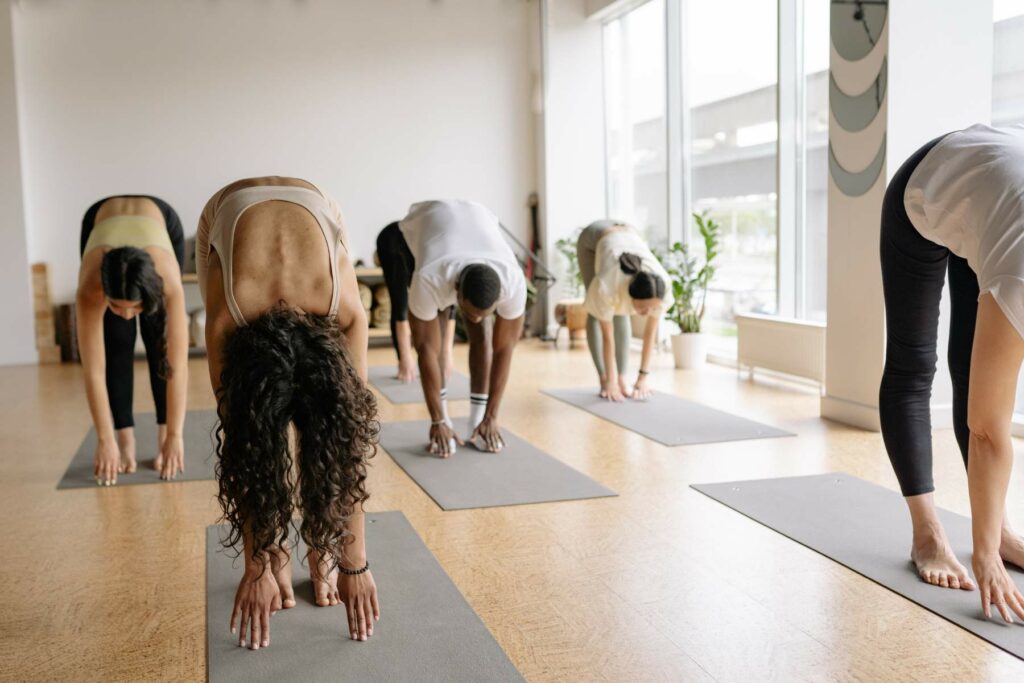
One of the most wonderful aspects of yoga is its universal appeal and accessibility. The practice of yoga doesn’t discriminate – it warmly welcomes individuals of all shapes, sizes, ages, and yes, flexibility levels.
Whether you’re as flexible as a gymnast or can barely touch your knees, let alone your toes, yoga has a place for you.
So how does yoga achieve this inclusivity? It’s all thanks to the vast array of yoga styles and adaptations available. There’s a smorgasbord of yoga types that cater to various needs, abilities, and preferences.
For instance, restorative yoga, a style that emphasizes relaxation and stress relief, requires minimal flexibility. It mainly involves holding simple poses for extended periods, often with the support of props like bolsters, blocks, and blankets.
It’s the perfect style for those looking for gentle stretches and deep relaxation, and it caters brilliantly to beginners and less flexible individuals.
On the other hand, if you’re seeking something more dynamic and physically engaging, styles like Vinyasa or Ashtanga might be up your alley.
These styles involve more complex sequences and poses, but they always allow for modifications to accommodate different flexibility levels. You’ll find that as you engage regularly with these practices, your flexibility will naturally improve.
But yoga isn’t just about the style you choose; it’s also about the approach you bring to the mat. Yoga encourages a mindset of non-judgment and compassion towards oneself.
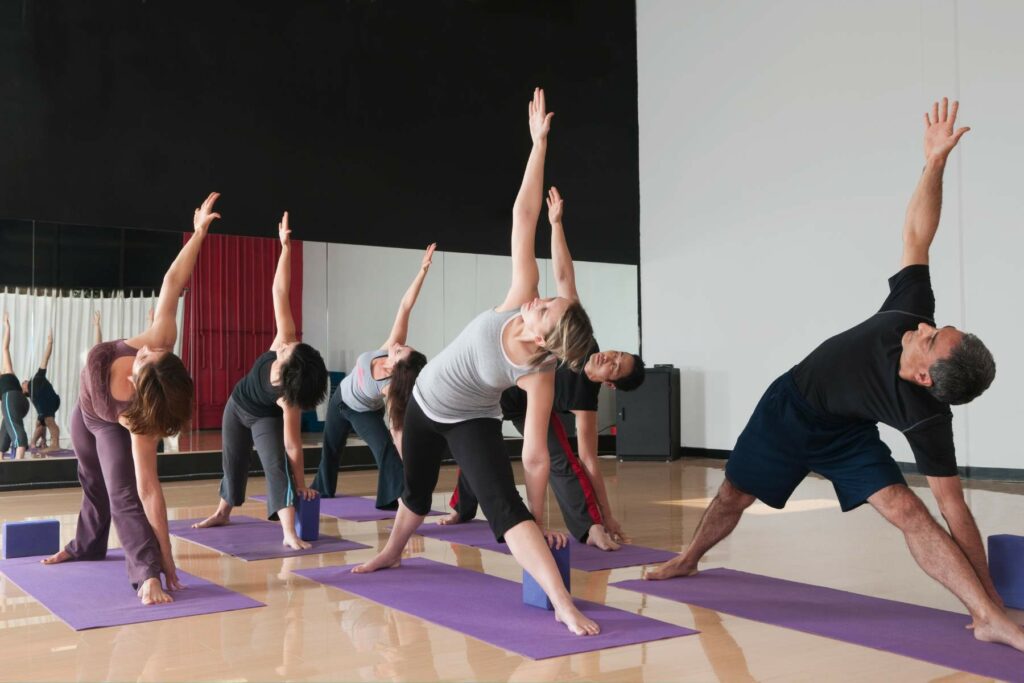
It teaches us to respect our bodies as they are, and to celebrate what they can do today, not what they could do yesterday or might do tomorrow. It invites us to focus on our breath, our presence in the moment, and the connection between our mind and body, rather than striving to achieve an aesthetic ideal.
And don’t just take our word for it! Many yoga enthusiasts and practitioners can attest to the fact that they embarked on their yoga journey without exceptional flexibility.
Some could hardly bend forward when they started, and poses like Downward Dog or Warrior were initially challenging.
But with patience, practice, and a kind approach to their bodies, they’ve seen improvements not only in their flexibility but also in their strength, balance, and overall wellness.
Yoga is not an exclusive club for the ultra-bendy. It’s a wide, open field inviting everyone to come and explore. Whether you’re young or old, stiff or bendy, seasoned athlete or couch potato, there’s a place for you in the wonderful world of yoga.
The Role of Yoga in Building Flexibility
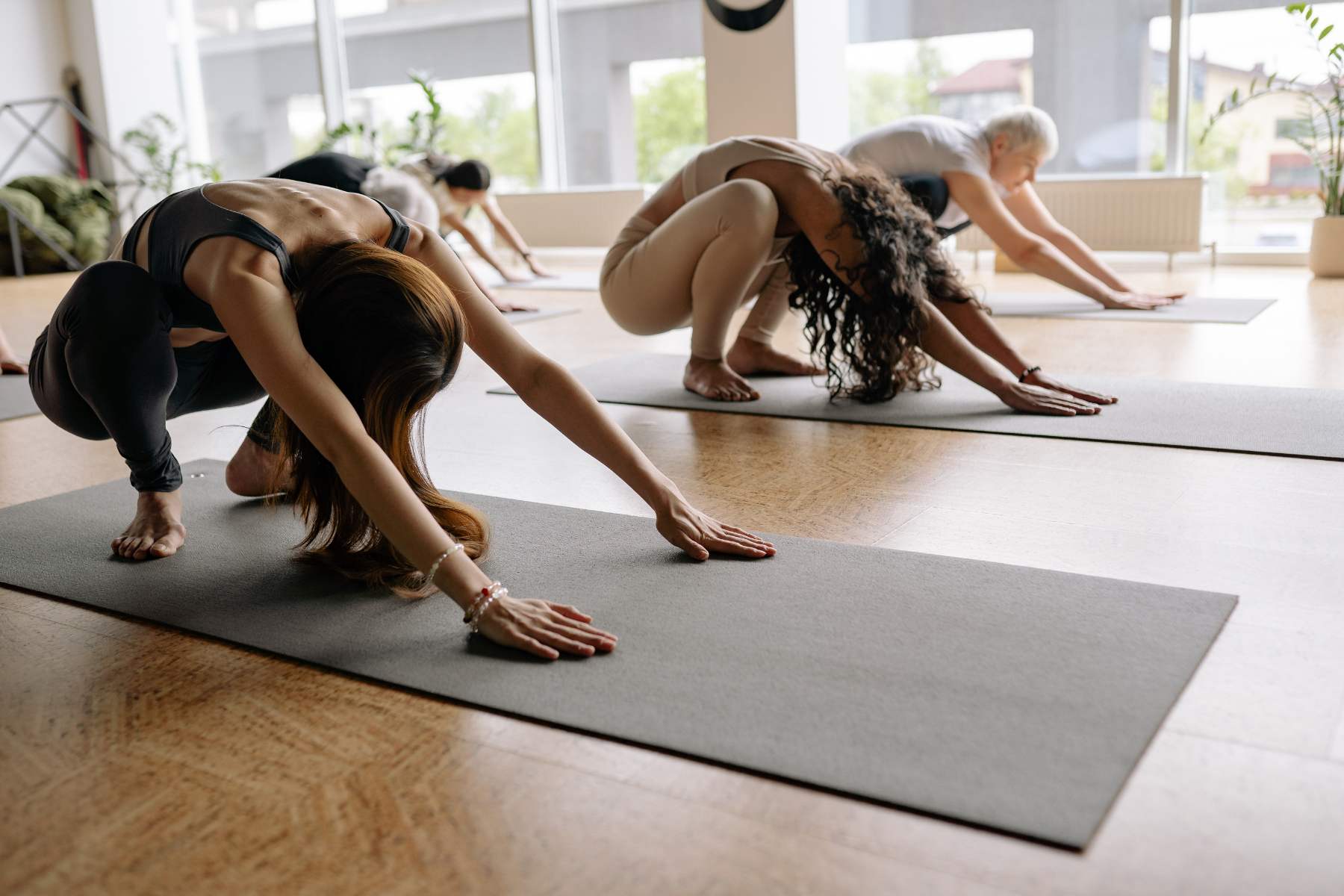
Whether you’re a seasoned yogi or a beginner, yoga can be instrumental in improving flexibility.
It doesn’t matter if you’re already fairly flexible and want to enhance your range of motion further, or if you’re working on basic stretches to alleviate stiffness – yoga has something to offer everyone on their flexibility journey.
To understand how yoga helps build flexibility, let’s break down what happens when we practice yoga.
Each yoga pose, or asana, targets different muscles and joints. For instance, when you perform a forward bend, you’re stretching the muscles in your back and the hamstrings in the back of your legs.
In a pose like the Warrior series, you’re opening your hips and stretching your legs while also working on your balance and strength.
Over time, with consistent practice, these stretches gradually increase the length and elasticity of the muscles and the range of motion in the joints.
The key here is consistent practice. Just like building muscle or losing weight, improving flexibility is a gradual process that requires regular work.
And let’s not forget about the role of breath in yoga. Conscious, deep breathing in yoga helps relax the muscles and encourages them to stretch more efficiently.
Over time, this can lead to increased flexibility, further demonstrating the intimate connection between mind and body in yoga.
Other Benefits of Yoga Beyond Flexibility
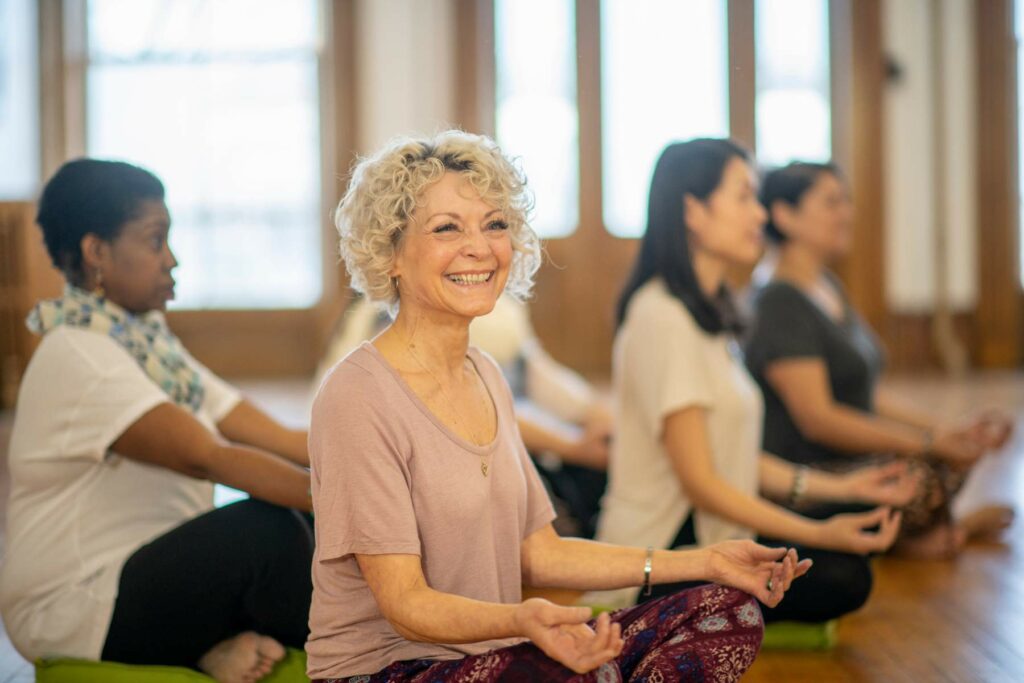
While the conversation about yoga often orbits around flexibility, yoga’s gifts reach far beyond just enhancing physical pliancy. Yoga’s holistic approach focuses on the union of mind, body, and spirit, and the benefits reflect this integrated perspective.
They span a wide range of physical and mental realms, making yoga a comprehensive wellness practice. And the best part? These benefits are available to everyone, irrespective of their initial flexibility. Let’s delve into some of these.
Improved Strength: Yoga is not just about bending and stretching. Many yoga poses require you to support your body weight in new ways, including balancing on one leg (like in Tree pose) or supporting yourself with your arms (like in Downward Dog or Plank).
Regular practice of such poses can increase muscle tone and strength. Over time, you’ll find your body becoming stronger and more capable.
Enhanced Balance: Balance is a key aspect of yoga. Poses like Warrior III or Half Moon challenge your body to stay stable, improving your physical balance. Regular practice can help enhance coordination, reaction time, and even memory.
Better Posture: Yoga encourages you to pay attention to your alignment in each pose, which can translate to improved posture off the mat. Over time, yoga can help correct alignment issues, alleviate strain on your neck, back, and other joints, and reduce the risk of injury in your daily activities.
Boosted Cardiovascular Health: While yoga might not get your heart pumping as much as a run or a spinning class, it can still contribute to cardiovascular health. Certain styles of yoga, like Power Yoga or Vinyasa, can provide a decent cardio workout.
Plus, even less intense yoga styles can help lower blood pressure, cholesterol levels, and improve heart rate variability, which is a key marker for heart health.
On the mental and emotional fronts, the benefits are just as substantial:
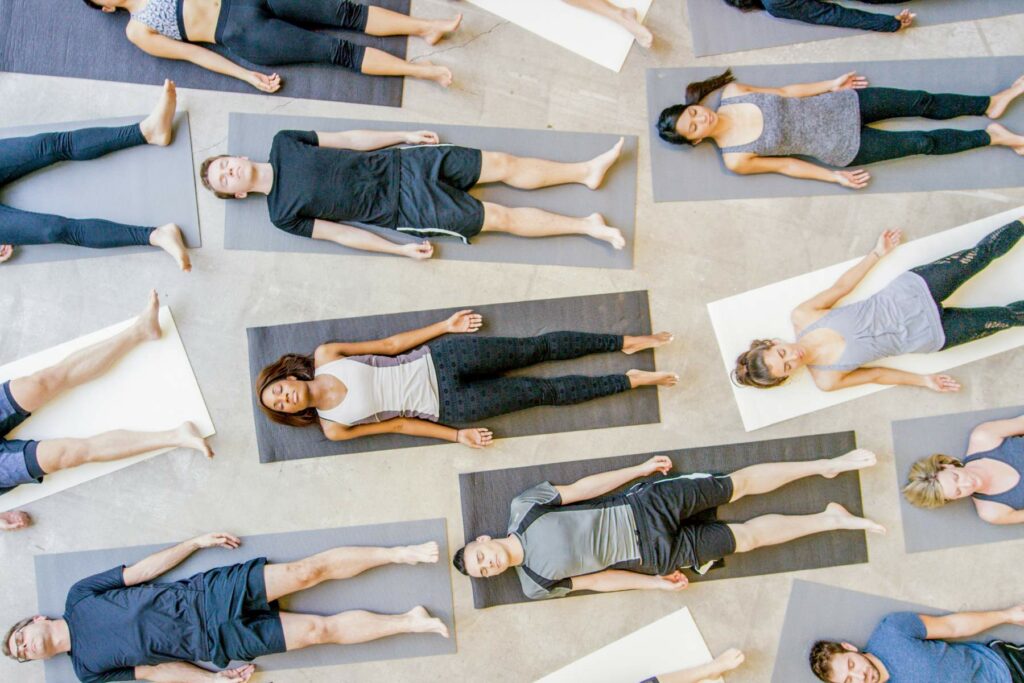
Stress Management: Yoga encourages mindfulness and focuses on the present moment, which can help manage stress. Breathing exercises, or pranayama, alongside meditation and gentle yoga poses, can activate your body’s relaxation response and help decrease levels of the stress hormone cortisol.
Enhanced Focus: The practice of yoga invites you to concentrate on your breath and to focus on the here and now. This can help improve attention span, memory, and concentration skills.
Improved Mood: Regular yoga practice is associated with increased serotonin levels and decreased symptoms of depression and anxiety. Yoga can also boost endorphins, helping you to feel happier and more positive.
Better Sleep: Yoga can aid in combating insomnia and improving sleep quality. Restorative yoga poses, deep breathing, and meditation practices can all help prepare the body for a good night’s rest.
Tips for Yoga Beginners of All Flexibility Levels
If you’re new to yoga and are feeling a bit daunted about your flexibility, don’t worry. You’re certainly not alone, and you’re embarking on a journey that’s inclusive, supportive, and adaptable to your unique needs.
Here are a few tips to help you get started with confidence, irrespective of your flexibility level.
Start Where You Are: One of the most important aspects of yoga is self-acceptance. So embrace where you are right now. You might not be able to touch your toes or do a full wheel, and that’s perfectly okay.
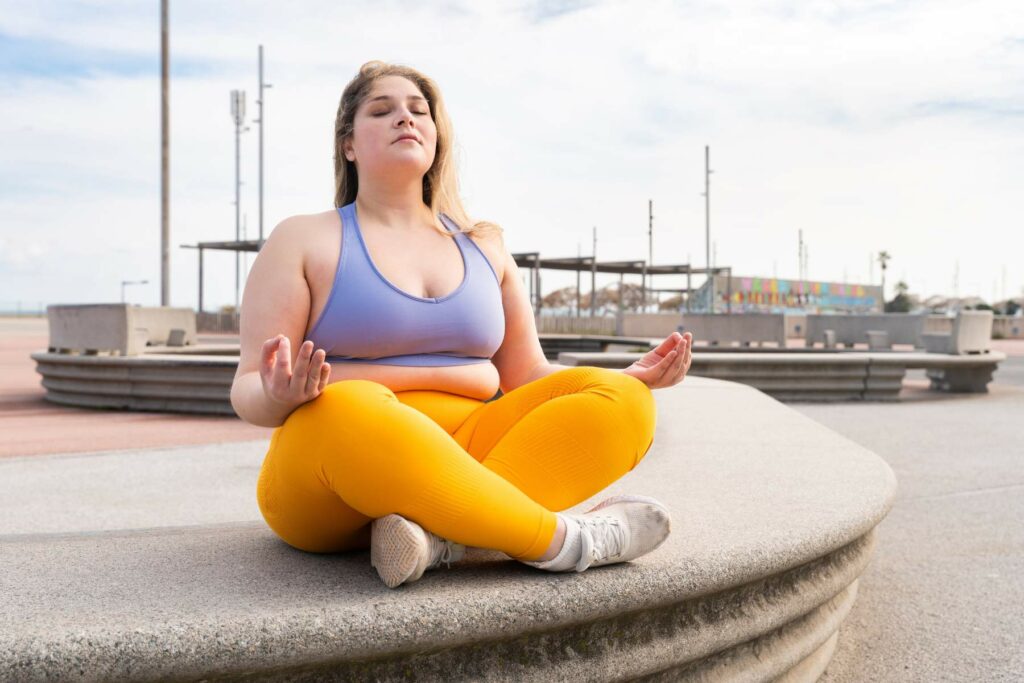
Your flexibility when you begin doesn’t determine your potential for growth or the benefits you can reap from yoga.
Listen to Your Body: Yoga is not about pushing yourself to painful extremes but about understanding your body’s abilities and limits.
If a pose feels uncomfortable or causes pain, listen to your body and ease off. Over time, your body will become more flexible and capable, but the key is to not rush the process.
Use Yoga Props: Yoga props, such as blocks, straps, bolsters, and cushions, can be invaluable tools, especially for beginners. They help bring the ground closer to you, extend your reach, and support your body in various poses.
Props can make the practice more approachable, comfortable, and safe, particularly when flexibility is limited.
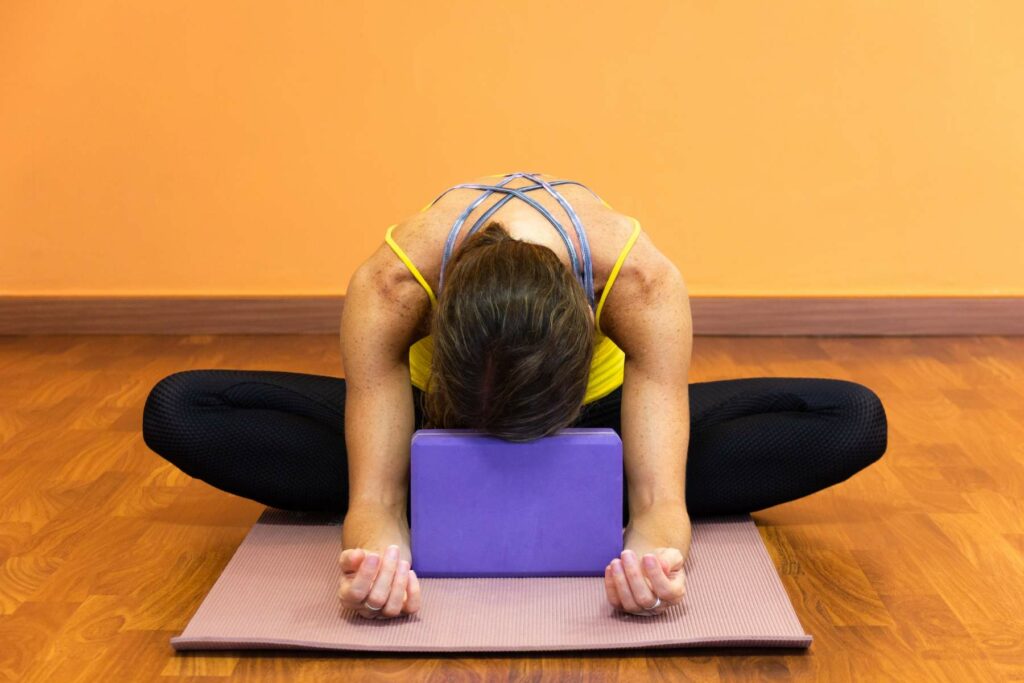
Find Beginner-Friendly Classes: A class designed for beginners will start with the basics, introducing you to simple poses, proper alignment, and breathing techniques.
An experienced instructor can guide your practice, offer modifications to accommodate your flexibility, and ensure that you’re practicing safely.
Explore Different Yoga Styles: Remember that there’s a wide variety of yoga styles out there, each with its unique pace, intensity, and focus. Try out different types of yoga to find the one that resonates with you the most.
Restorative or Hatha Yoga could be a good starting point, and as your flexibility improves, you could try more dynamic styles like Vinyasa or Ashtanga.
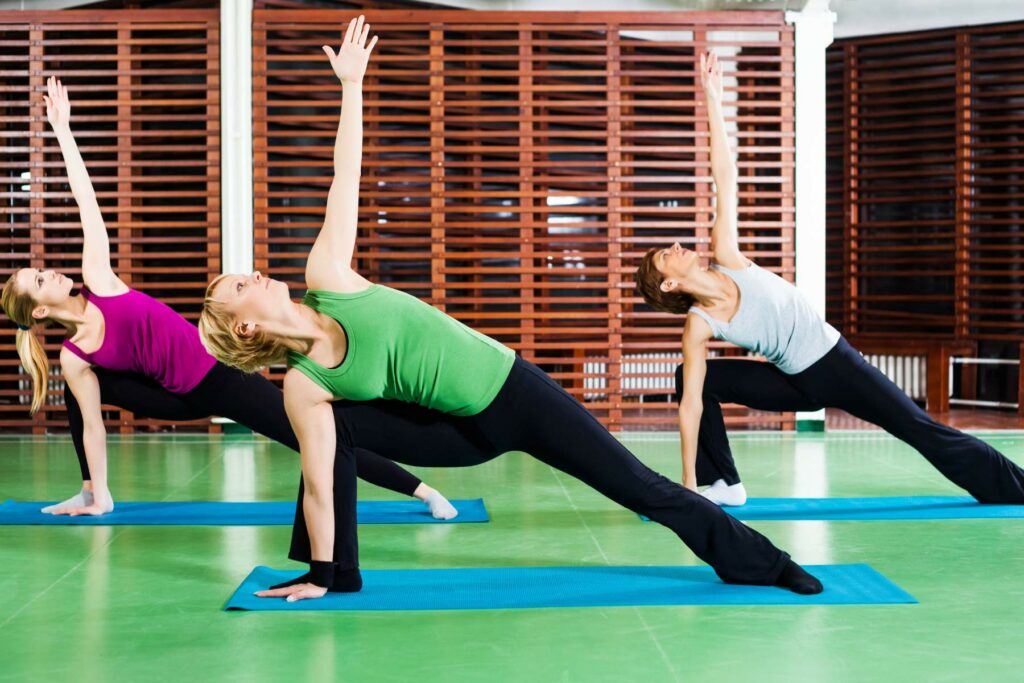
Embrace Consistency Over Intensity: Consistency is key in yoga. It’s better to practice a little every day than to do a lot once a week. Even 10 to 15 minutes of yoga daily can make a difference over time. Regular, gentle stretches can help improve your flexibility more safely and effectively than infrequent, intense sessions.
Related Article: 10 Yoga Poses You Should Do Every Day
Online Resources: In the digital age, there are numerous online resources available to guide your yoga journey. From YouTube channels to yoga apps, you have access to a wealth of expert advice and guided sessions at your fingertips. Find a platform that you enjoy and use it to supplement your practice.
Embracing the All-Inclusive Yoga Journey: Flexibility and Beyond
Yoga is far more than a domain reserved only for the ultra-flexible. It’s a welcoming practice that extends its arms wide open to people of all flexibility levels.
Its essence lies in promoting holistic well-being, fostering a sense of inner peace, and building a stronger connection between mind and body, rather than achieving picture-perfect poses.
An excellent resource to help you start your yoga journey, regardless of your current level of flexibility or fitness, is the Yoga Fat Loss Bible program.

This comprehensive program is designed to help you explore yoga in a safe and gradual manner, supporting you on your journey towards improved flexibility, strength, and overall health.
Let’s bid goodbye to the yoga-flexibility myth once and for all and embrace the wonderful world of yoga with open hearts and minds.
Remember, yoga doesn’t require you to be flexible; it helps you become flexible over time, at your own pace, while offering a plethora of other mental and physical benefits.
